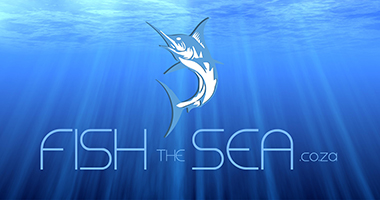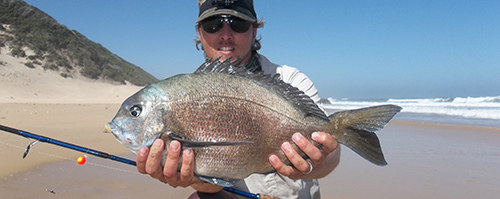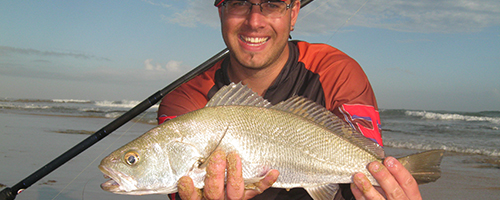Micro Fishing Tackle - What You Need To Get Started?
This page will help you find your ideal setup when micro fishing. With this miniature form of angling the fisherman has to be very specific with what he/she fishes with as there is not a dedicated market for Micro Fishing as yet in South Africa. If you follow the guidelines below you are sure to come right.
Micro Fishing Tackle?
Micro fishing tackle brings a new definition to the word "ultra light" as the tackle used in this application of angling has to be extremely light in order to catch your fish without spooking them and also to enjoy the fight once the fish is hooked.
As mentioned above there is no dedicated tackle to Micro Fishing, so one has to make a plan in order to find what you are looking for. Fly Fishing shops can be especially good in this regard and you can find many great things to use for micro fishing. Below is a list of tackle you require when Micro Fishing, and it is expanded below with more detail.
- Micro Fishing Rods
- Micro Fishing Reels
- Micro Fishing Line
- Micro Fishing Leader
- Micro Fishing Hooks
- Micro Fishing Sinkers/Weights
- Micro Fishing Floats
- Micro Fishing Bite Indicators
Rods For Micro Fishing
Besides the hooks you use for Micro Fishing, the actual rod is the most important part of your equipment, the reason being: Smaller fish get spooked easier and feed more shyly. There are 3 different "classes" of Micro Fishing Rods available to choose from: Long rods (9-14 feet), Short rods (4-6 feet) and small rods (1-2 feet). The smaller rods are fun to use but take the whole fishing aspect out of micro fishing for me so I prefer to stick with the longer and shorter rods. I will generally carry both.
What To Look For In A Micro Fishing Rod?
The rod must be very light and sensitive, in order to hook the fish and play it gently so it doesn't come off the hook. In the short rod range I would look at the Shimano Scimitar 5 foot rod, very light tip and tried and tested for the micro fishing application. In a longer rod I will use a Fly Fishing rod, you don't need anything expensive in this case, look at the cheaper Elbe and Stealth brands and you will come right, I like to use a 12 foot fly rod here.
Reels For Micro Fishing
You can use a spinning "coffee grinder" reel or a bass baitcaster reel for Micro Fishing. I prefer spinning reels for the simple reason you do not generally need to cast when Micro Fishing and they are easier to look after and service than bait casting reels. If you are looking for a small bait caster, Shimano, Daiwa and Abu Garcia all have very small bait casters you can purchase that will do the job quite well. Spinning reels should be as small as possible and generally not bigger than a size 1000. I really like the Ryobi 500, and you can also look at other brands that have smaller size reels such as Tica, Shimano, Daiwa and Okuma.
Micro Fishing Line & Leader
Monofilament or braided lines can be used for Micro Fishing, but when using a spinning reel, the lightest possible braid you can find (Must be under 10lbs) should be used in my opinion. Then the leader is also very important, as light as you are willing to go is the best option. The smaller fish do get spooked and will be reluctant to bite if a heavy leader is used. Once again the fly fishing shops can come to your rescue here as they have some extremely light and thin line which has low visibility in the water. I would not recommend going heavier than 3lb's for your leader line. I prefer to use Maxima ultra green as my leader (I think it is 2.8 lb).
Micro Fishing Terminal Tackle: Hooks, Weights, Floats & Bite Indicators
Terminal tackle is very important, especially the hooks. Most of the hook size you want will have to be bought from the fly fishing section of fishing shops. One should never use a hook larger than size #8, and anything smaller than that is perfect, the smaller the hook, the more "invisible" it will be to the fish, therefore the more chance you will have catching it. When fishing freshwater I would use between #20 and #26 to target fish, the make and quality is not too important here, but when fishing saltwater I struggle to use anything less than a #18, just because of the fish species you are targeting especially around rocks and structure, a small Blacktail can easily straighten a poor quality hook. I was lucky to find a packet of #16 Diachii's and they have been amazing, have not seen this size again unfortunately and I think I am down to 2 hooks. Just pick your hooks as carefully as possible. Hooks with long shanks are much better for this application.
Weights are very important, for the spooking reason and how it limits your bite "feeling". The smallest split shot you can find should be used, fished 10 centimeters above your hook. The role of the weight is to either get your bait onto the bottom and allow limited movement or to keep a float straight up in the water in the perfect position.
Small, lightweight floats are required for micro fishing. The floats that should be used are the porcupine quill style floats or the longer floats. The ball floats do not work well at all. The smaller and lighter your float, the better.
Bite indicators can be used if you require them. Anything you can manufacture here that will help you pick up the smaller bites is perfect, whether the bite indicator is placed on the top of your rod, somewhere on the line, or in the same position as where your float would be. It can help sometimes to bare this in mind.






